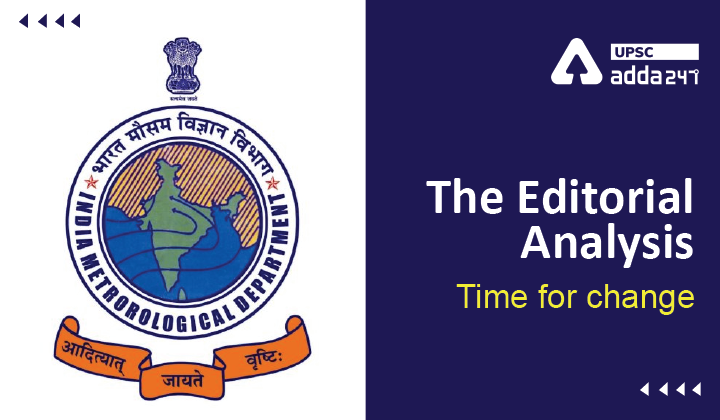Table of Contents
IMD Forecasting in India- Relevance for UPSC Exam
- GS Paper 2: Governance, Administration and Challenges- Government policies and interventions for development in various sectors and issues arising out of their design and implementation.

IMD Forecasting in India in News
- The April IMD (Indian Meteorological Department) forecast usually has little detail on how much rain is expected during each of the monsoon months, and whether the rain will be lopsided or evenly distributed geographically.
- This causes uncertainty among various stakeholders who depend upon these forecasts such as farmers, disaster managers, etc.
IMD Forecast for 2022
- The India Meteorological Department (IMD) has forecast a ‘normal’ monsoon for this year, or 99% of the Long Period Average (LPA) of 87 cm.
- The IMD has a multi-stage monsoon forecast system.
- The IMD usually shares April month’s forecast in late May or early June, just around the time the monsoon is imminent over Kerala.
- The forecast in April is thus only a general indicator and of little public utility.
- A normal monsoon forecast this year is also predicated on the absence of an El Niño, a warming of the Central Pacific linked to the drying up of monsoon rains.
- However, another ocean parameter called the Indian Ocean Dipole, the positive phase of which is associated with good rains, has also been forecast to be ‘neutral’ or unhelpful for the monsoon.
With a Bang- IMD’s Rainfall Forecasting Model
Recent Changes in IMD Forecasting
- The IMD has changed its definition of the LPA, which is an indication of the average rainfall over a 50-year interval.
- As per the norms of the World Meteorological Organization to which India is a signatory, LPA should be updated every 10 years.
- The IMD stuck with an LPA number of 89 cm (the average monsoon rain from 1951-2000) until 2018, when it was updated to 88 cm (to reflect the average from 1961-2010).
- And now, to count for the 1971-2020 interval, the number is 87 cm.
- Concerns: While on the surface, it might look like India is losing just a centimetre of rainfall every decade, it must be remembered that this conceals wide shifts in rainfall when computed at the State and district levels as the monsoon rain is highly uneven.
- IMD Explanation: The IMD explains the loss of a centimetre every decade as part of a natural cycle of the monsoon where 30 years of less rain, or a ‘dry’ epoch, is followed by 30 years of a ‘wet epoch’.
- India began a dry epoch in the 1970-80 decade, the IMD says; it is now in a neutral phase and will enter a wet epoch in the decade, 2030-2040.
IMD Forecasting in India- Way Forward
- Much like the update to the average, the IMD must update some processes and lay stress on shorter forecasts, a month or a fortnight ahead, rather than maintain anachronistic traditions of long-range forecasts that are neither accurate nor useful.
IMD and Weather Forecast in India




 TSPSC Group 1 Question Paper 2024, Downl...
TSPSC Group 1 Question Paper 2024, Downl...
 TSPSC Group 1 Answer key 2024 Out, Downl...
TSPSC Group 1 Answer key 2024 Out, Downl...
 UPSC Prelims 2024 Question Paper, Downlo...
UPSC Prelims 2024 Question Paper, Downlo...





